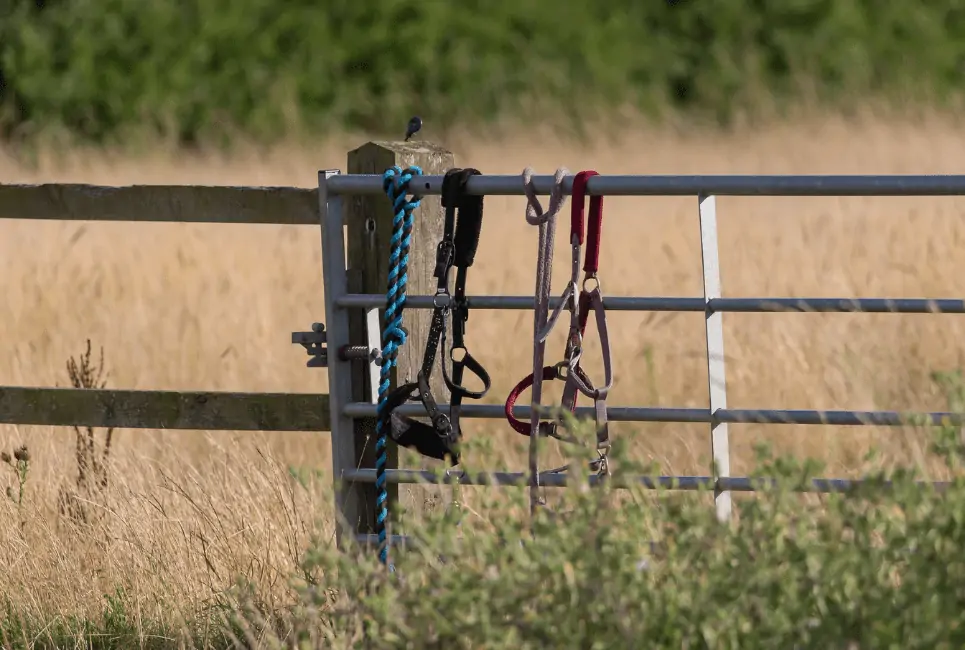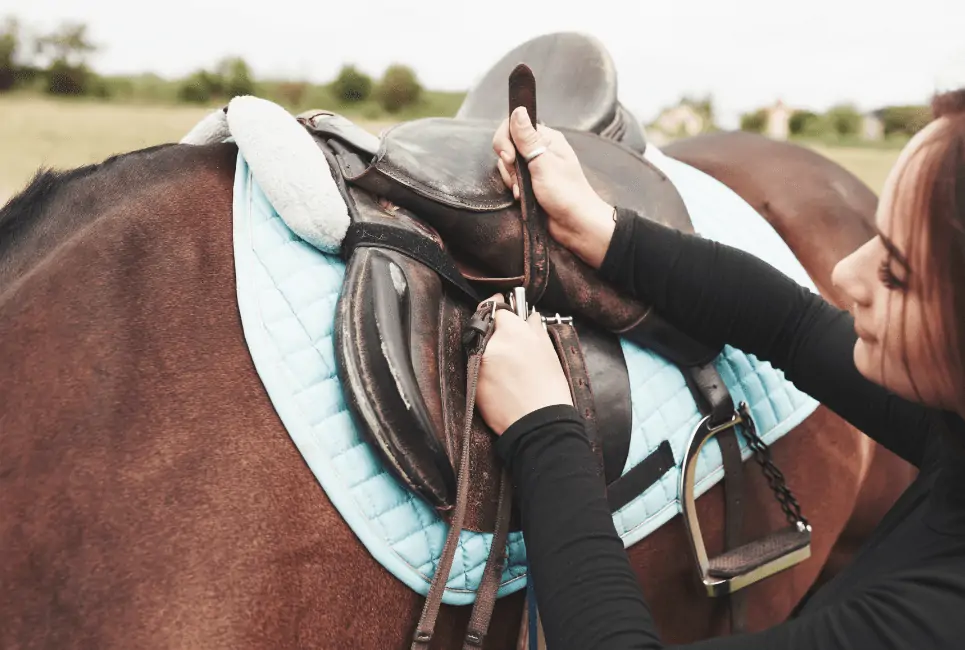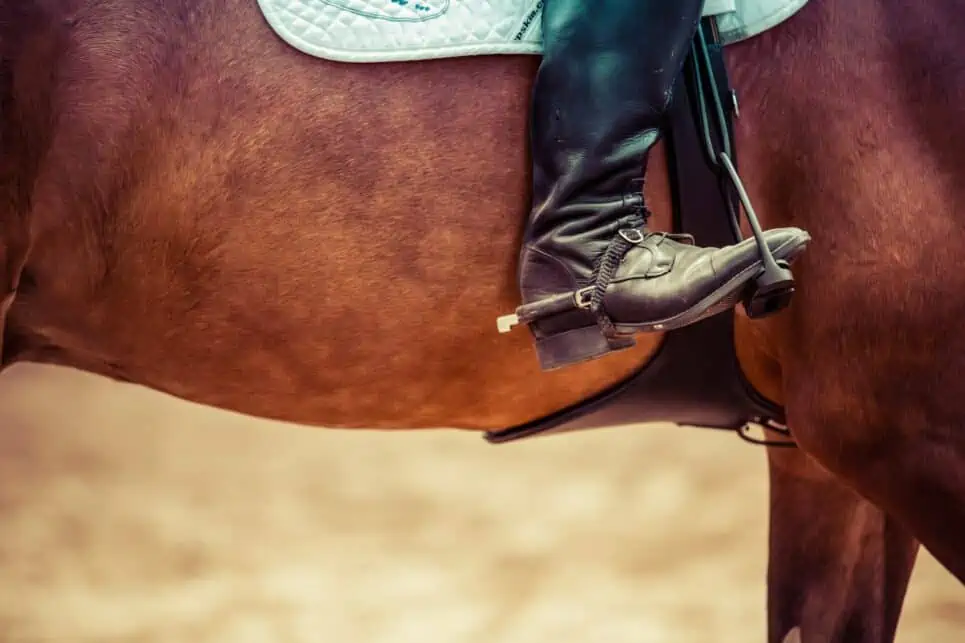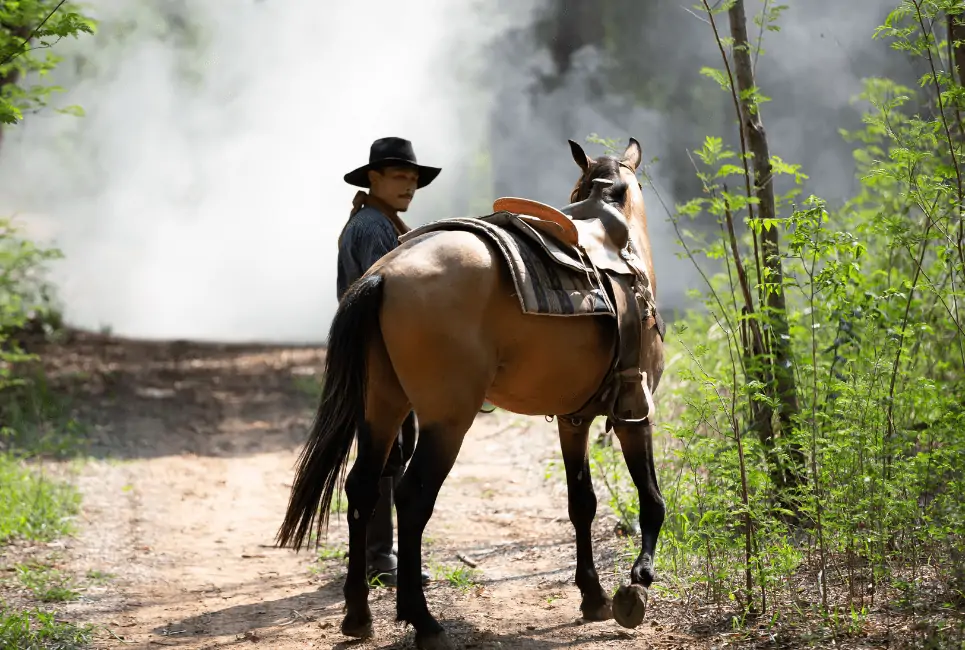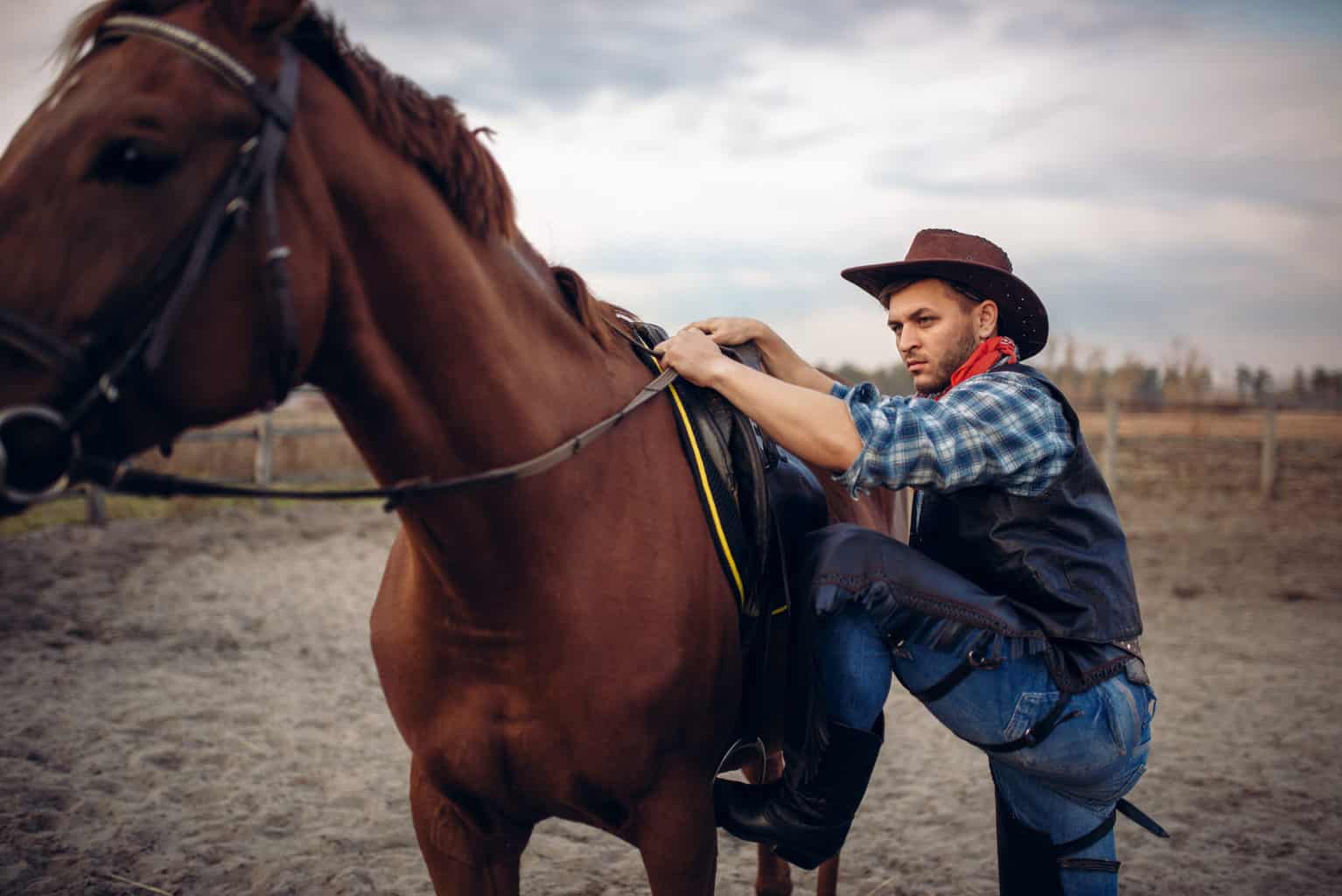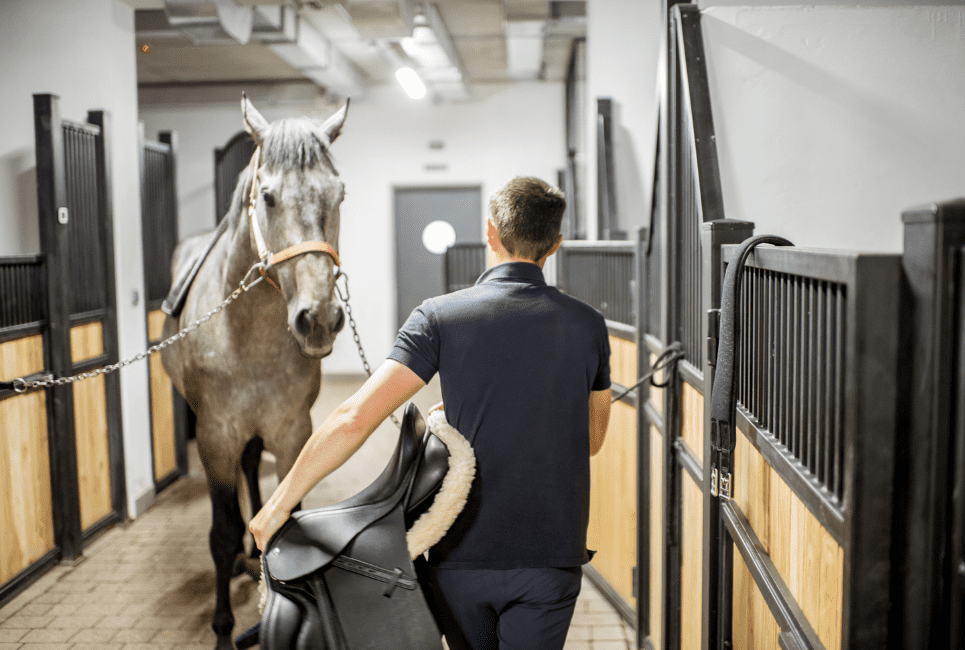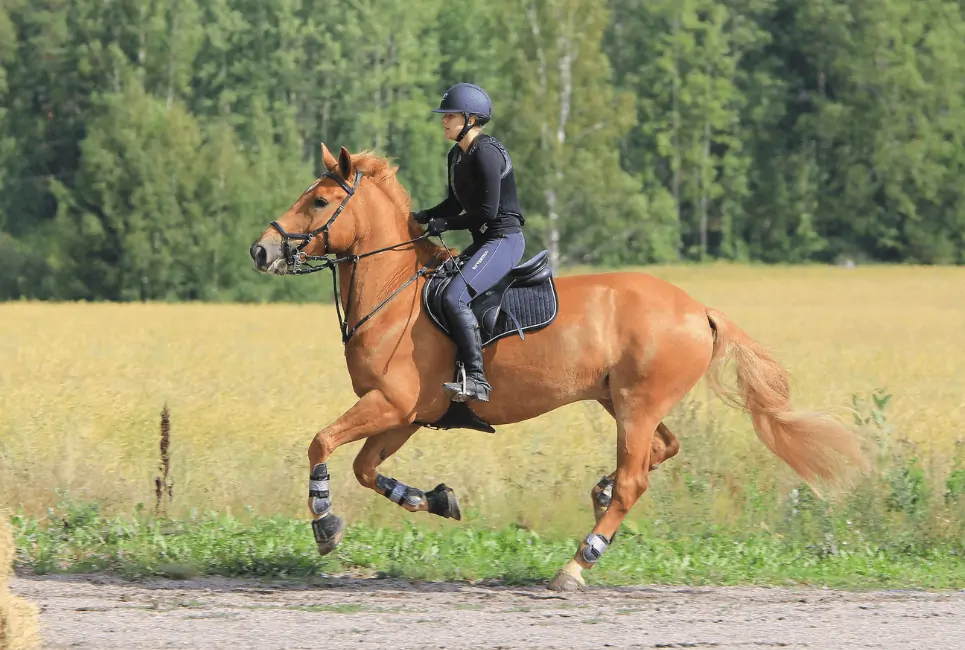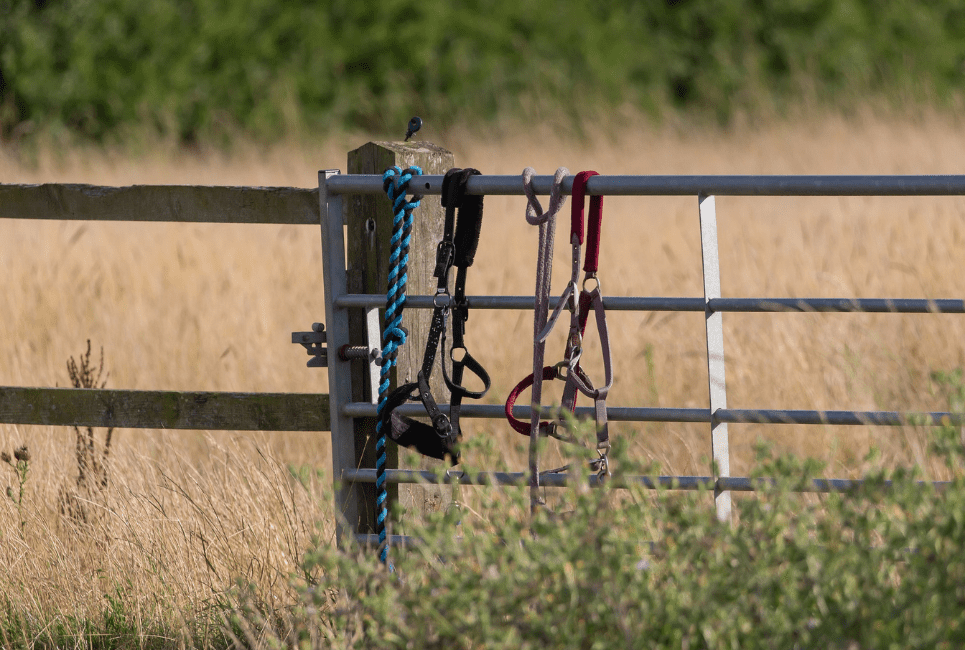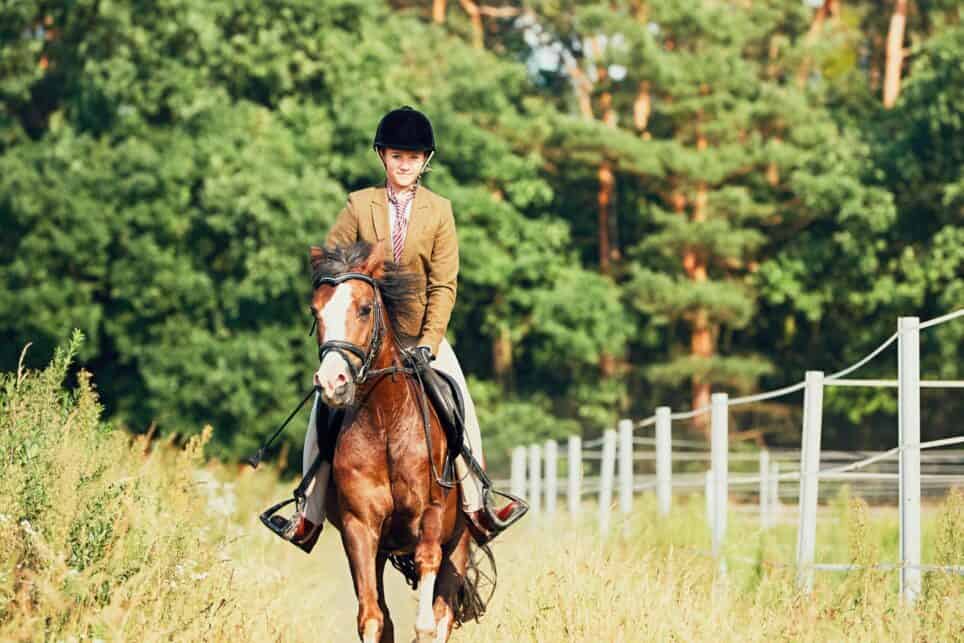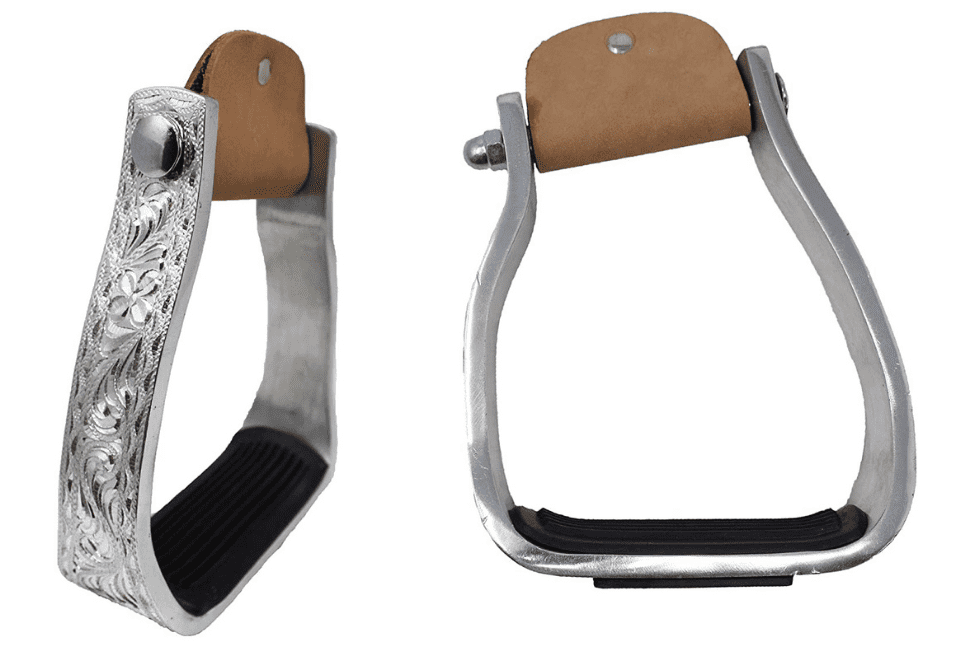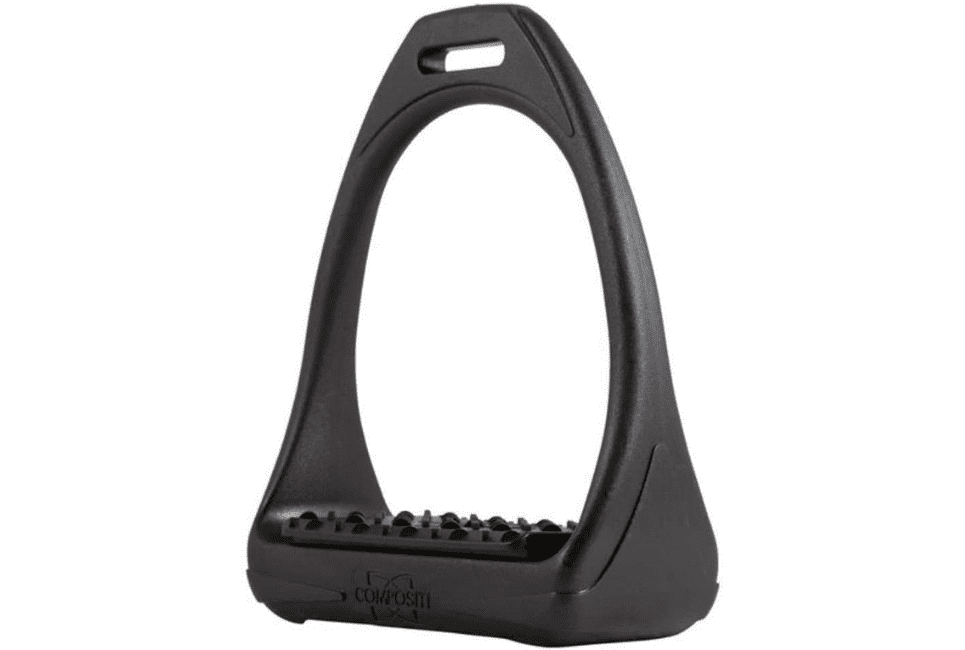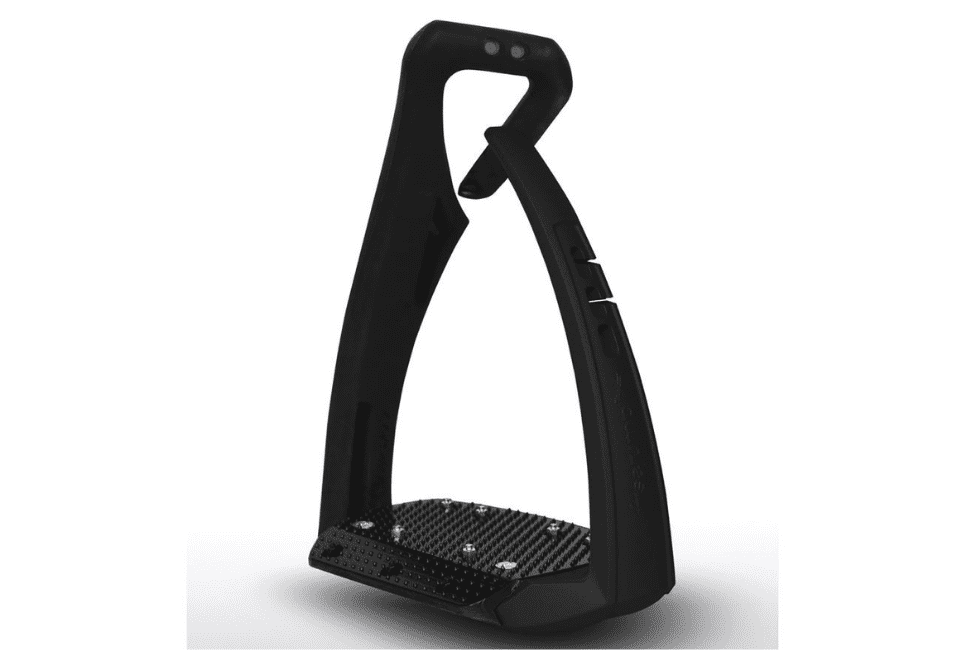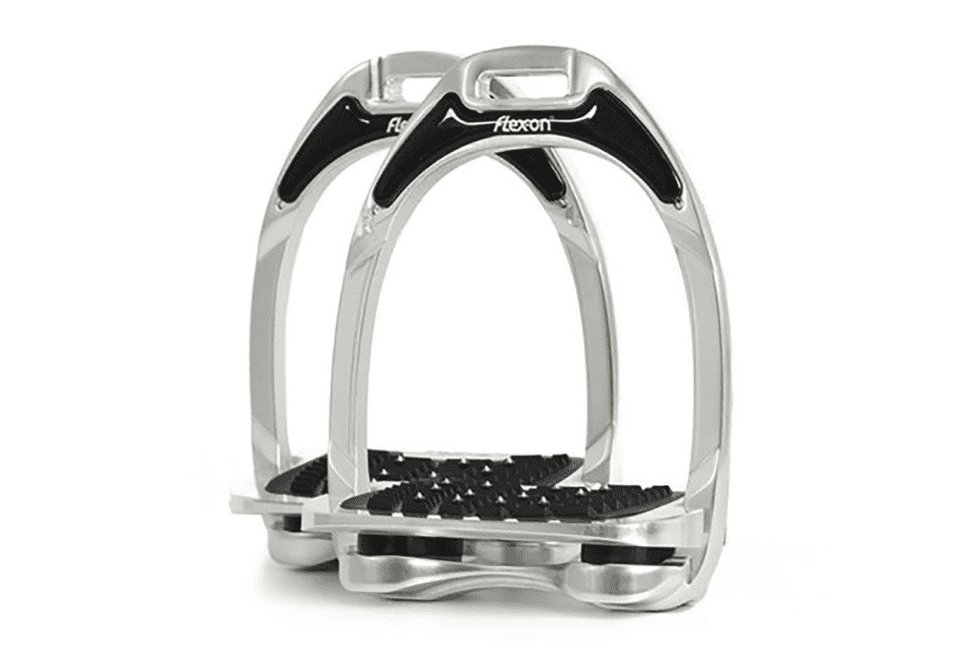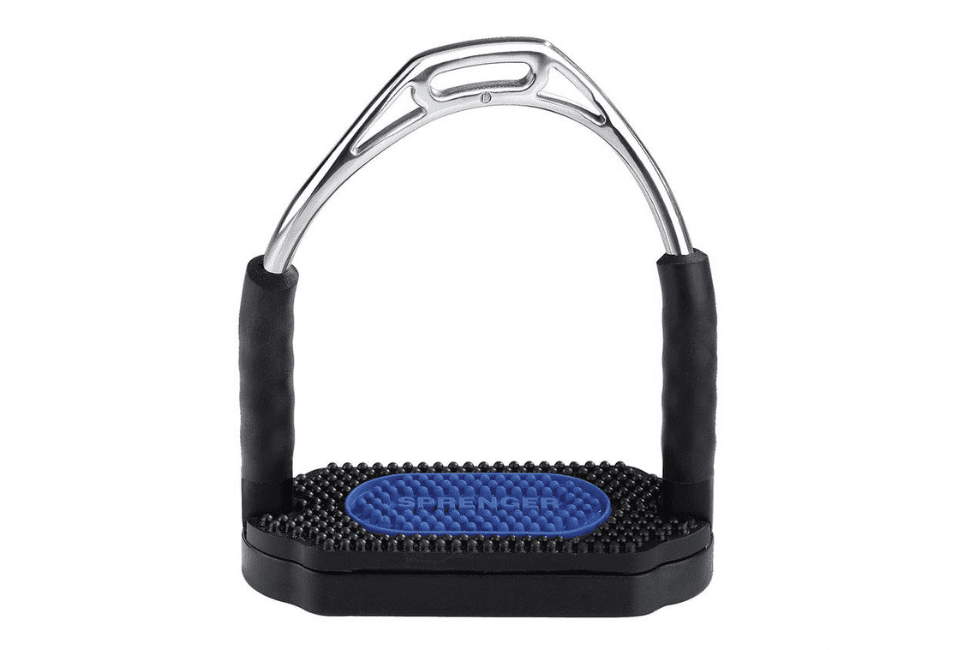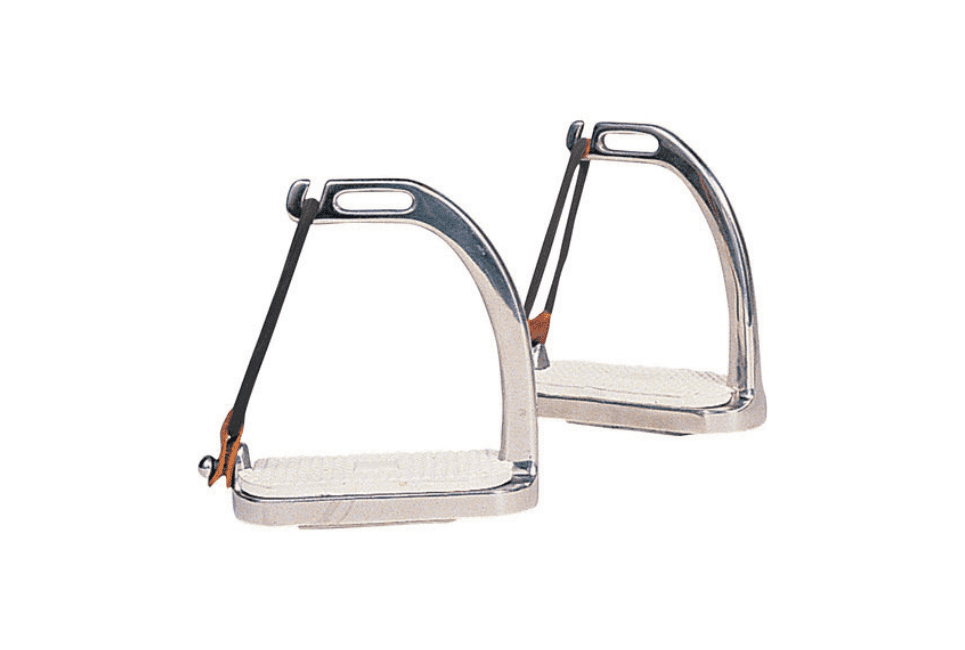- What is a Gaited Horse - October 5, 2023
- What to Look at When Getting a New Farrier - September 21, 2023
- Best Horse Feeds for Older Horses - September 21, 2023
Unless you’re an expert rider who turns every month into “no-stirrups-November,” you will need a good pair of stirrups to help you when riding your horse. Aside from the bridle, the saddle and stirrups are perhaps some of the most essential horse riding equipment. If you are starting, you probably think all stirrups are the same—they’re not.
There are many different types of stirrups. The type you choose will depend on various factors, from your level of riding to your physical ability, the kind of riding discipline you participate in, and even your foot size.
Finding the best pair of stirrups can be a real game-changer. With the right stirrups, you can ride better, be safer, and enjoy your riding more. But standing in the saddlery showroom, surrounded by polished, plated, and glowing stirrups, it can be pretty overwhelming to know which stirrups to choose.
Some of the stirrups on the market can also set you back substantially if you purchase the wrong pair or are unable to use them for your riding sport. While some saddles come fully dressed with stirrup irons, stirrup leathers, and girths, most saddles don’t. You will have to purchase a set of stirrups and all the other saddle accessories before you can go riding.
So how do you choose? I choose my stirrups based on the type of riding I’m doing. Then I consider my physique and the needs of my joints. It may sound complicated, but it’s not with a bit of guidance.
Background and History of Stirrups
The first saddles in history didn’t have any stirrups attached. Stirrups only came about much later when mounted soldiers entered the battle. With heavier armor, stirrups allowed the rider to keep their position on the saddle, make faster turns, and gallop at speed.
Where the first stirrups were probably made from some less costly material such as wood, clay, or leather-wrapped frames, stirrups have evolved over the years. Stirrups are made from iron, steel, composite materials, leather-wrapped frames for Western saddles, and other high-tech polymer materials.
With the turn of the century, equestrian sports have evolved to embrace technology in an effort to jump higher, do better-balanced movements, turn faster in roping, and remain steady during long-distance galloping. Due to the equestrian sports, we have a more comprehensive range of stirrups than ever before, and choosing, while complicated, is much more fun.
What Are Stirrups?
Stirrups are supportive rests that hang from the saddle, providing two platforms where the rider’s feet brace during riding, jumping, and mounting. With stirrups, it becomes possible to mount a horse from the ground without jumping onto the horse.
While stirrups keep you safe by providing extra support and helping you stay balanced on your horse, stirrups can also become dangerous when the rider’s feet slip through or if the stirrup twists and the rider can’t get their foot out.
Having the right kind of stirrup for the type of riding you do ensures you stay safe on your horse, perform your best, and don’t suffer painful physical injuries due to poor leg and foot positioning.
Examples of Stirrup Types
There are several types of stirrups on the market. Each has its own unique purpose. Let’s consider these stirrups:
Child or Safety Stirrups
When children are starting to learn how to ride, it can be very challenging to keep their feet in the right position, so safety stirrups with peacocks are ideal. These stirrups have an open outer side where an elastic band attaches to the two open ends.
When the child’s foot slips to the side, the elastic band slips off, releasing the foot so the child can’t twist their ankle or be dragged. For this reason, these stirrups are known as safety stirrups.
These stirrups were primarily intended for use by children. However, there are also adult-size safety stirrups that can be used by those learning to ride or those participating in a dangerous equestrian discipline like racing or steeplechasing.
A variation of the peacock-band safety stirrup has a toe cage. The peacock stirrup is intended to stop the rider’s foot from slipping through and damaging their ankle or getting caught. Essentially, this stirrup is a normal stirrup with the addition of a leather pouch that covers the toe area or a plastic cage that screws onto the stirrup.
The toe cage safety stirrups are popular with endurance riders who spend long hours in the saddle. With a toe cage, the rider can relax more and need not worry about their foot slipping through the stirrup. These endurance riders often ride with flat shoes like sneakers that are more comfortable as they can’t maintain the classical rider foot position over rough terrain and for long distances.
Classic Stirrups
Most stirrups fall in the classic group of stirrups. While there are many variations in this group, all these stirrups function the same. The stirrup is a wishbone-shaped structure with a platform or stirrup bar joining the two bottom points of the wishbone. At the top of the wishbone, the stirrup hangs by a leather strap called the stirrup leather.
Variations on this design can change the shape of the wishbone to be more oval, twisted, off-set, and thicker at the base. The area where the stirrup leather passes through can be an independent swivel or a simple slot that hangs on the leather.
The base of the stirrup or stirrup bar can be slanted horizontally or vertically depending on the rider’s foot or ankle accommodation. Riders with knee pain benefit from vertically slanted stirrup bars, while horizontally inclined stirrups can alleviate ankle pain.
Other innovations that help improve comfort are:
- flexible stirrup sides
- concussion-relieving stirrup sides and bars
- using different materials to change the balance and weight of the stirrups
- some stirrups are magnetic, locking the rider’s foot into place on the stirrup bar
Western Stirrups
Western stirrups consist of a frame covered in leather, aluminum, or steel. The stirrup bar is wider and larger to accommodate the rider’s foot when wearing a larger Western boot. The stirrup leathers are also wider and often have leather fenders to protect the rider’s legs. The elaborately decorated stirrup wishbones match the stitching and tailoring on the Western saddle.
Common Stirrup Problems and Solutions
There are a few issues that arise with different stirrups.
Stirrup Breakage
While most stirrups are sturdy enough to withstand quite a lot of pressure, stirrups can break. This often happens when the stirrup has been hit against something or caught on something, causing the horse to pull away forcefully. Composite stirrups are more likely to break than iron stirrups. Stirrups with springs are also more likely to break than solid stirrups.
Solution: Always check your stirrups before using them. Use the type of stirrup that’s appropriate for what you’re doing. High-impact riding sports such as rodeo riding, jumping, and farm work will require a sturdy stirrup frame. While some stirrups with springs are designed especially for jumping, frequently check these for signs of wear and tear.
Stirrups That Are too Small
Most economy stirrups come in two sizes: child and adult sizes. However, if you have a large foot, this may be too small to accommodate your booted foot correctly. If the stirrup is too small, you could get your foot caught if you fall.
Solution: For larger foot sizes, order a larger size stirrup. More oversized stirrups are especially necessary with Western stirrups, where some brands have a smaller size stirrup due to the leather padding of the stirrup frame.
Damaged Stirrups
Any riding equipment that shows signs of damage is dangerous. Rusted stirrups have become pitted with exposure to the elements or have cracks showing on the wishbone frame that is dangerous and could potentially fail while you are riding.
Solution: Check all riding equipment, including the stirrups, before each ride. At the very least, check your equipment every week. If you notice any signs of damage, remove the stirrups and fit other stirrups. When checking the stirrups, check the stirrup leathers, as these frequently wear through and can snap without warning.
Wrong Stirrup for the Type of Riding
With the many different types of stirrups available, it is tempting to use your stirrups for any and all types of riding. Yet, this is not always safe or suitable. Not all plastic or composite stirrups are made for jumping or carrying a heavier rider’s weight. These stirrups can quickly fail and cause serious injury.
Solution: Before you try a new riding sport, ensure your stirrups are suited for this type of riding.
Incorrect Stirrup Height
While stirrup height is more related to the adjustment of the stirrup leather, it is a serious problem that transfers to the stirrups. Riding with stirrups that are too long or too short compromises the position of your foot in the stirrup. Incorrect stirrup height can lead to safety issues, problems with rider comfort, and a lack of riding balance.
Solution: Ensure your stirrups are the right height or length for you. Even riders of the same height may not always require the same stirrup length. Check your stirrup length by standing up in the saddle and placing a fist below your seat. Anything more than that and your stirrups are too short, and if you can’t fit a fist under your seat, your stirrups are too long.
Best Tips for Buying the Right Stirrups for You
The day you go looking for new stirrups, be sure to follow these tips to choose the right stirrups for your type of riding.
Take Your Saddle With You
It may sound strange, but taking your saddle with you can help, especially if there’s a riding dummy or riding mount in the shop.
The best way to know if you will enjoy the stirrups is to fit the stirrups to your saddle while strapping your saddle to the dummy horse and mounting up. Do a few rises in the stirrups, move your feet through the different riding positions, and take your feet out of the stirrups and find the stirrups again (without looking).
If you feel comfortable and don’t “feel” the stirrups, then these stirrups are a comfortable size and fit.
Wear Your Riding Boots
You should wear the boots you will be riding with mostly. The thickness of your boot sole and the way your boot increases your foot’s space requirement will influence the stirrup size that’s right for you.
Check the Stirrup Specifications
When you’re planning on doing some more technical riding, check the riding specifications that come with the stirrups. While economy stirrups won’t necessarily have this, more advanced stirrups will have a complete set of specifications from rider weight to riding requirements.
Know Your Weakness
Stirrups can help correct physical challenges you may have as a rider. If you struggle with ankle mobility, getting a set of stirrups with a slanted stirrup bar is a good idea, as this may help you ride more comfortably. To know your “weakness,” you should be aware of your own physical challenges. Be specific about what you want to “correct” using the stirrups you are buying.
Best Stirrups Buying Guide
Ok, so you’re ready to buy. You’ve chosen a few possible options you think may work for you, but you’re having a hard time choosing between the different types. What now?
Suitability for Riding Discipline
Whichever type of stirrup you consider buying, it should be suitable for the type of riding you’re doing. You wouldn’t buy a Porsche to drive around on your ranch with, would you? Likewise, you wouldn’t buy Sprenger specialty stirrups to do ranch work, nor would you try to do showjumping in your Western stirrups.
Quality of Material and Craftsmanship
The stirrups you choose should be made from quality materials. If you purchase composite stirrups, ensure these are top quality and not merely made from hardened plastic. For Western stirrups, ensure the leather cover is of the best quality, has sufficient padding, and is well-treated with a quality hide-feed.
The craftsmanship of the stirrups needs to reflect quality too. Check the stirrups for any signs of poor manufacturing, such as bubbles, unnecessary lumps, poor stitching, or scratches. Feel the weight of the two stirrups and ensure they both weigh the same.
Budget
Money does affect what you can afford, so know your budget. Buy the best stirrups you can afford, as buying cheap stirrups won’t equate to a good investment. However, buying the most expensive stirrups won’t necessarily meet your unique riding needs. While you may think it looks great to buy the latest Ophena stirrups, these won’t necessarily be the best stirrups for your riding purposes. Therefore, balance your budget with practicality.
Public Rating
The opinions of other riders will significantly influence your choice of stirrups. If you know that other people at your stables ride with a particular type of stirrup, you know that stirrup is a good product. Browsing online shops will also give you an opportunity to see what star rating a specific kind of stirrup has. Fortunately, all the stirrups I’ve reviewed are highly rated, so you can rest assured you are buying quality and comfort.
Overall Feel and Comfort
Finally, out of the stirrups you are considering, which pair has the best comfort, fits your foot the best, and provides a great “feel” when you move with them? Always buy comfortable stirrups, ensure they allow you to feel the horse’s movement, and ensure these stirrups are safe to ride with, no matter the terrain.
Top Stirrups Recommendations
These stirrups are the best in their class when considering my overall buying guide:
Best Western Stirrups
With the PRORIDER Challenger Western Engraved Angled Sloped Barrel Aluminum Saddle Stirrups, you are sure to put your best foot forward in the Western pleasure and performance classes. These stirrups look great, and they are ideal for Western riding.
Pros
- Angled stirrup to accommodate the Western rider’s boot better and keep the rider’s foot flat on the stirrup treads
- Made from quality aluminum for a lightweight stirrup
- Beautifully engraved to complete the Western look
- Reduces ankle and joint pain due to the slant
Cons
- Issues have been reported with the bolt securing the stirrup branches to the stirrup top
- Not much foot space between the stirrup bars
Best General-Purpose Stirrups
If you’re not too bothered by regulations or want to perform in a specific equestrian discipline, then a general-purpose stirrup is ideal. The COMPOSITI Reflex 3D Wide Track Stirrups are a perfect purchase.
Pros
- Made from durable composite material for lightness
- Wider stirrup track for extra grip
- A wider stirrup bar for extra foot space and grip
- Shock resistant
- Great all-weather stirrup
Cons
- A swivel base may not be as comfortable for seasoned riders used to a fixed base
- The broader base can encourage the foot to slip too far forward
Best Jumping Stirrups
Freejump Soft’Up Pro + Stirrups are ideal for jumping. Happy riders and eventers, who all agree these are some “pretty grippy stirrups,” rate these stirrups highly. The outer branch’s unique design and complete flexibility make for a safe and effective jumping stirrup or a great choice if you have a rambunctious horse.
Pros
- Made from high-quality composite material for extra lightness and durability
- Non-skid stirrup bars that are 27% larger for better balance
- Steel springs are built into the stirrup branches for extra shock absorption
- The outer stirrup branch is fully flexible for rider safety
Cons
- The upper end of the price spectrum makes these stirrups quite expensive
- Stirrups need special stirrup leathers to allow fitment of the stirrups, adding to the cost
Freejump stirrups offer a great ride for those who jump. If you should have a horse prone to bucking or bolting, your Freejumps can assist with the increased grip and the extra-long grip spikes on the stirrup bars.
Best Dressage Stirrups
Samshield® Flex-On® Aluminum Inclined Ultra Grip Stirrups are the stirrups of choice for the dressage enthusiast. These stirrups are highly rated for dressage and lower-level jumping, and with the slightly inclined stirrup bars, you can rest assured your foot remains in the right position.
Pros
- Made from solid aeronautical-grade aluminum for extra strength
- Treated aluminum to prevent oxidation
- The metal stirrup tread of hardened spikes for extra tread
- Inclined stirrup bars improve foot position and rider posture
- Lightweight at only 31 ounces per set
- Off-set stirrup slot to further enhance rider comfort
Cons
- The upper end of the price range, making these stirrups quite expensive
- Imported, so any repairs or exchanges can be complicated
- If a rider uses the wrong footwear, their feet may slip on the spikes due to the inclined stirrup bar
The incline stirrup bar takes some getting used to. Yet, it is really comfortable to ride with once you’ve adjusted. These stirrups also look great on any dressage saddle, and the stylish finish complements a fully turned-out rider on show day.
Best Endurance Stirrups
Joint pain and foot pain are some of the main issues for endurance riders. While some riders prefer the safety cage-type stirrups, these Herm Sprenger 4-F Bow Balance Stirrup Irons offer far superior comfort and safety with a swivel cut-away design for the stirrup branches.
Pros
- Specifically designed for reduction of joint pain
- Extra flexibility cushions the joints from impact
- Bowed shape and off-set eye allow for better foot placement and leg position with less effort
- Stirrups are designed for each leg, labeled, and twisted to allow freedom of movement
Cons
- Quite a pricey set of stirrups
- No replacement pads for the stirrup bars
With the additional impact absorption, these stirrups are great for jumping and endurance, where long miles can lead to joint and foot pain.
Best Safety Stirrups
Dover Saddlery® Peacock Fillis Stirrup Irons is an ideal and cost-effective set of stirrup irons for beginner or novice riders. These make a great purchase for those looking for a budget stirrup at a low price point, even if they aren’t specifically looking for safety stirrups.
Pros
- Made from quality stainless steel
- Durable high tension elastic bands to secure the “open” branch of the stirrup
- It comes with two elastic bands and elastic tabs
- Elastic bands detach with medium pressure for an effective release
- Available in three sizes
Cons
- Not suitable for jumping
These stirrups are a great buy from a safety and budget point of view. However, these stirrups aren’t suited to more strenuous riding such as jumping or cross-country, where the elastic bands come off too quickly and can actually cause a fall.
FAQs
Answer: Angled stirrups are great as they improve the angle of the rider’s ankles in the stirrups. The rider enjoys more comfort and stability with angled stirrups by having their ankles at a more natural angle.
Answer: Flexi stirrups have elasticated sides, which move and allow the rider a greater range of freedom and more natural flexibility of their ankles. Flexi stirrups usually have a rubber cover to protect the side of the rider’s foot.
Answer: Western stirrups need to be purchased slightly larger than traditional English stirrups. When mounted, place your feet in the stirrups, checking that you can fit half an inch on either side of the foot between the side of the foot and the stirrup wings.
Answer: Composite stirrups are made from a synthetic blend of polymers, which is lightweight yet durable. Composite stirrups are suited to endurance riding, flatwork, general riding, and lower level eventing.
Answer: Saddles usually come “unfitted,” meaning that saddles don’t come with stirrups, stirrup leathers, or a girth. Only saddle sets come with basic stirrups, leathers, and a girth. Often, these provided extras don’t fit your horse (or you either).
Western saddles often come with a standard set of stirrups and a girth. These are decorated to match the saddle.
Best Stirrups Conclusion
Finding the best stirrups for the type of riding you do is about considering your own physique, budget, and what you want from the stirrups. Not all stirrups are suited to all riders, but there is a perfect stirrup out there if you know what you want.
Whether you choose a general-purpose stirrup or something more technical for jumping, you should always put safety and comfort first. Safety and versatility are why the COMPOSITI Reflex 3D Wide Track stirrups are ideal for most riders. However, if comfort and quality are what you’re after, the Herm Sprenger 4-F Bow Balance Stirrup Irons are a great choice.
Use tips like wearing your riding boots, fitting the stirrups to your saddle, and being informed about your own physical challenges to choose the best stirrups for you.

